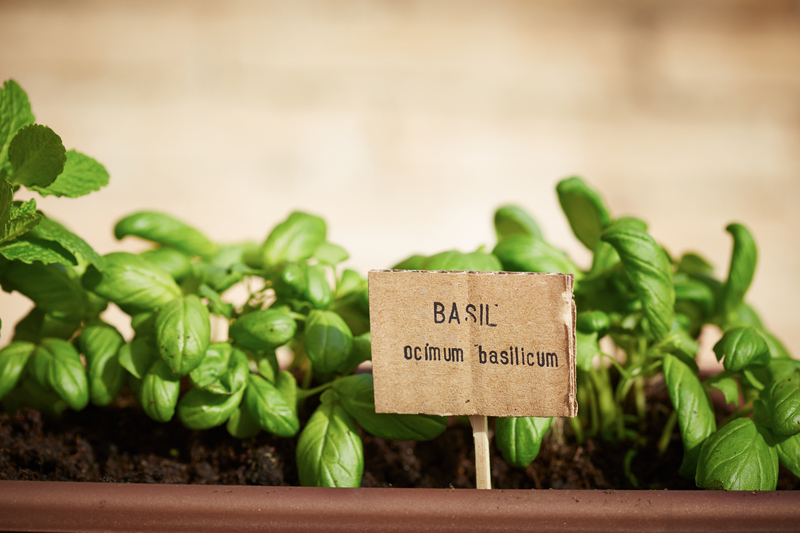From Neglect to Nurture: Your Garden Transformation Guide
Posted on 31/05/2025
From Neglect to Nurture: Your Garden Transformation Guide
Are you longing to transform a forgotten, overgrown patch of earth into a flourishing oasis? Every beautiful garden starts as an idea, but neglected spaces can feel daunting to tackle. Worry not! This comprehensive garden transformation guide will walk you through the journey from neglect to nurture. Whether you're a novice gardener or a seasoned green thumb seeking inspiration, our guide will help you revive, rejuvenate, and reimagine your outdoor space into a sanctuary of color, health, and joy.
Why Transform a Neglected Garden?
Neglected gardens are a hidden opportunity. That bramble-choked corner, weedy lawn, or empty yard holds vast potential both for aesthetic appeal and ecological benefit. By embarking on your garden revival journey, you're not only elevating the value of your property but also supporting local wildlife, creating a more relaxing home environment, and boosting your well-being.
- Environmental Impact: Healthy gardens support pollinators, reduce carbon footprint, and help regulate microclimates.
- Mental Health: Tending to plants and green spaces is therapeutically beneficial, reducing stress and enhancing mood.
- Community Appeal: A transformed garden makes your home--and your neighborhood--more beautiful and inviting.

Step 1: Assess the Starting Point
Understanding Your Garden's Current State
Before you can nurture new growth, it's crucial to analyze what exists--and what problems need tackling. Explore your neglected garden with a notebook or smartphone to jot down observations. Pay attention to:
- Soil type and health
- Areas of shade and sunlight
- Existing plants, weeds, or trees
- Drainage and waterlogged spots
- Hardscaping elements (paths, walls, fences)
*Tip: Taking "before" photos will let you treasure your garden's dramatic transformation later!*
Step 2: Clean-Up and Preparation
Purge the Old to Make Way for the New
Once you've mapped your outdoor space, it's time for some tough love. Start with a thorough clean-up to reveal the bones of your garden. This step is both literal and metaphorical: you'll be clearing physical debris and mentally making space for new ideas.
Essential Clean-Up Tasks:- Remove litter, dead plant material, and garden waste
- Cut back overgrown shrubs and prune trees
- Eliminate persistent weeds--roots and all
- Repair or replace broken fences, paths, or raised beds
- Pressure wash patios or decking areas
*Remember: Wearing gloves and using the proper tools will make the process safer and more effective. Enlist the help of family or friends if the work feels overwhelming.*
Step 3: Design Your Dream Space
Garden Planning Tips for Lasting Success
With a blank(er) canvas, now comes the fun part--reimagining your garden's layout! Consider how you'll use the space, your preferred aesthetic, and any functional needs. Beautiful garden transformations start with a thoughtful plan.
Questions to Guide Your Planning:- Do you want a relaxing retreat, entertaining area, or productive vegetable patch?
- Is low-maintenance landscaping important to you?
- Are there children or pets who need safe play zones?
- What colors, textures, and shapes appeal to your senses?
Garden Design Elements
- Lawns and Meadows: Consider replacing tired grass with wildflower meadows for pollinators or lush turf for play.
- Borders and Beds: Use curves and height variations for visual interest. Plant in layers from tall at the back to low in front.
- Hardscaping: Add patios, stepping stone paths, or seating areas for structure and functionality.
- Water Features: Ponds, fountains, or bird baths add tranquility and attract wildlife.
*Sketching your garden layout or using online planners helps you visualize the transformation before you break ground.*
Step 4: Soil Revival--The Foundation of a Healthy Garden
Feed the Earth, Grow Abundance
Neglected gardens often have depleted, compacted, or lifeless soil. Great gardens begin with great soil. Investing time in soil improvement pays huge dividends in plant health and resilience.
Key Soil Improvement Steps:- Test your soil: Use a simple test kit to assess pH, drainage, and fertility.
- Add organic matter: Incorporate compost, leaf mulch, or well-rotted manure to increase nutrients.
- Loosen compacted areas with a fork or tiller to improve aeration and drainage.
- Amend as needed--add lime for acidic soils, or sand for better drainage in heavy clay.
*Healthy, living soil teems with earthworms, microbes, and beneficial fungi. The more you nurture the soil, the less you'll need fertilizers and pesticides in the future.*
Step 5: Plant Selection--Choosing for Success
Pick Plants that Suit Your Space
Plant choice is the heart of your garden transformation. Select species that thrive in your climate, respect your effort level, and provide year-round interest. Native plants are especially rewarding--they attract pollinators and have natural resistance to local pests.
Consider These Aspects When Choosing Plants:- Sunlight availability: Full sun, partial shade, or deep shade?
- Water needs and drought resistance
- Height, spread, and growth rate
- Seasonal features like flowers, berries, or autumn color
- Maintenance level--perennials vs. annuals, evergreens vs. deciduous plants
*Don't overlook the importance of structure--add shrubs, small trees, and evergreens for winter appeal, and layer beds with bulbs and groundcovers for continuous color and texture.*
Step 6: Nurturing New Plantings
Caring for Your Garden's Next Chapter
The initial care you give your new plantings will determine your garden's long-term success. Garden nurturing is a process--consistent, patient attention reaps stunning results.
Garden Care Essentials:- Water deeply and less often to encourage strong root growth.
- Mulch beds to retain moisture, suppress weeds, and feed the soil.
- Regularly monitor for pests and diseases; address problems early with organic methods when possible.
- Support young trees and tall plants with stakes or cages if needed.
- Feed with a balanced fertilizer during the growing season for robust growth.
*Timely deadheading, pruning, and dividing perennials will keep your garden vibrant and manageable.*
Step 7: Maintaining Momentum--Keep Your Garden Thriving
Long-Term Care Tips for a Magical Transformation
Ongoing maintenance sustains your garden's transformation and ensures your hard work pays off for years to come. Make a monthly or seasonal checklist to stay organized.
Maintenance Checklist:- Weed control: Remove invasive plants before they seed.
- Regular watering--especially during dry spells.
- Mulch renewal in beds each spring and autumn.
- Prune shrubs and trees in the correct season.
- Replant gaps, divide overcrowded perennials, and rotate edible crops.
*Celebrate progress along the way: each new bloom and buzzing bee is proof of your dedication and nurturing.*
Inspiring Garden Makeover Ideas
If you're searching for transformational inspiration, consider these creative approaches to garden makeovers:
- Themed Gardens: Explore cottage, Mediterranean, Zen, or wildlife-friendly styles.
- Vertical Gardening: Maximize small or urban spaces with living walls and trellises.
- Edible Landscapes: Mix ornamental and food-producing plants for beauty and bounty.
- Wildlife Havens: Install bird feeders, bee hotels, and butterfly-friendly flowers.
- Artistic Touches: Sculptures, mosaics, and colorfully painted pots add whimsy and personality.
Common Challenges--and How to Overcome Them
Mistakes to Avoid During Your Garden Transformation
- Doing too much at once: Tackle your project in manageable stages.
- Ignoring soil health: Plants thrive only as well as their root environment.
- Poor plant placement: Always match plants to their preferred conditions.
- Overwatering or underwatering: Learn the needs of each plant and adapt accordingly.
- Lack of patience: Great gardens, like all beautiful things, take time to flourish!

Tools and Products for a Seamless Garden Transformation
Essentials for the Modern Gardener
Equip yourself with these basic tools for a smoother journey from neglect to nurture:
- Gloves and digging tools (spades, forks, trowels)
- Pruners and loppers for shrubs and trees
- Wheelbarrow or garden tote
- Watering can or hose with adjustable nozzle
- Mulch, compost, and plant supports
*Invest in quality tools--they'll make your work safer, faster, and more enjoyable.*
Your Pathway from Neglect to Nurture--A Flourishing Future Awaits
Transforming a neglected garden is a labor of love, but the rewards are immense. From the thrill of the first seedlings pushing through revitalized soil, to the tranquil pleasure of a mature flowerbed swaying in a summer breeze, your garden will reflect the nurturing care you invest in it. Begin your garden transformation today and watch your outdoor space blossom into a cherished extension of your home.
Remember, every garden has a unique story. What was once neglected can become a lush, living testament to your vision and effort. With thoughtful planning, patient care, and a willingness to learn, your transformation from neglect to nurture is inevitable--one season, one plant, and one joyful discovery at a time.
Ready to start your garden makeover?
Share your progress, challenges, and victories in the comments below! For more tips and inspiration, explore our other articles on garden improvement and outdoor living. Happy nurturing!

